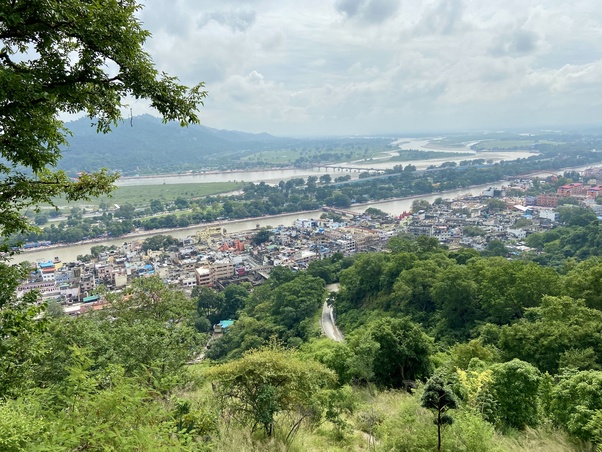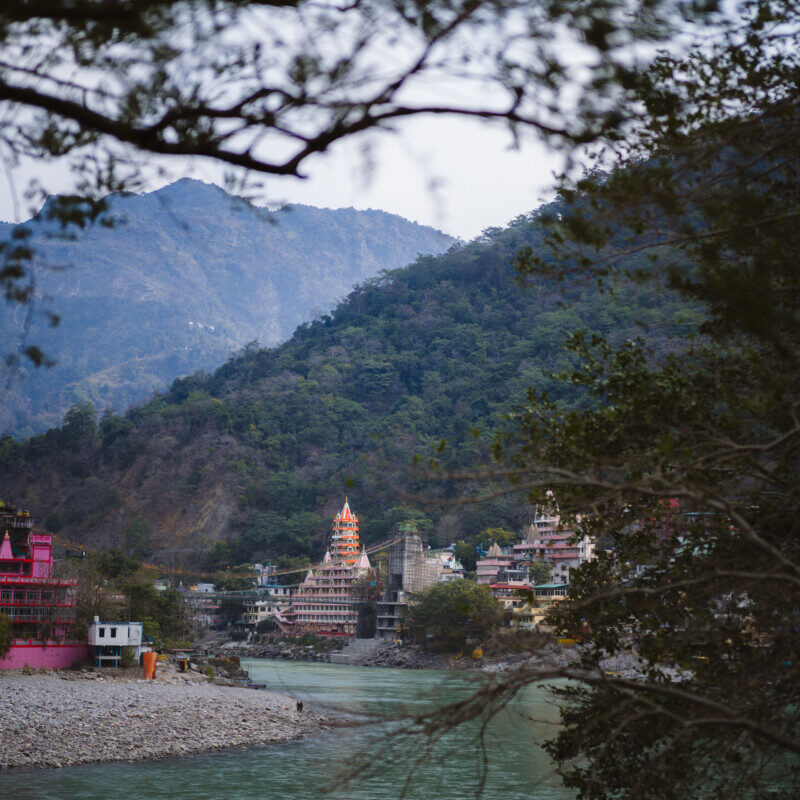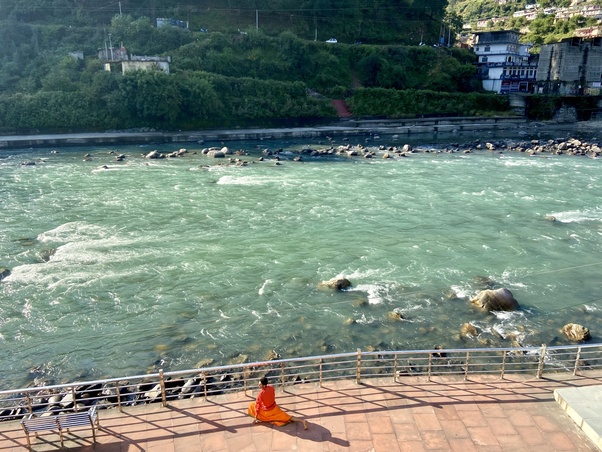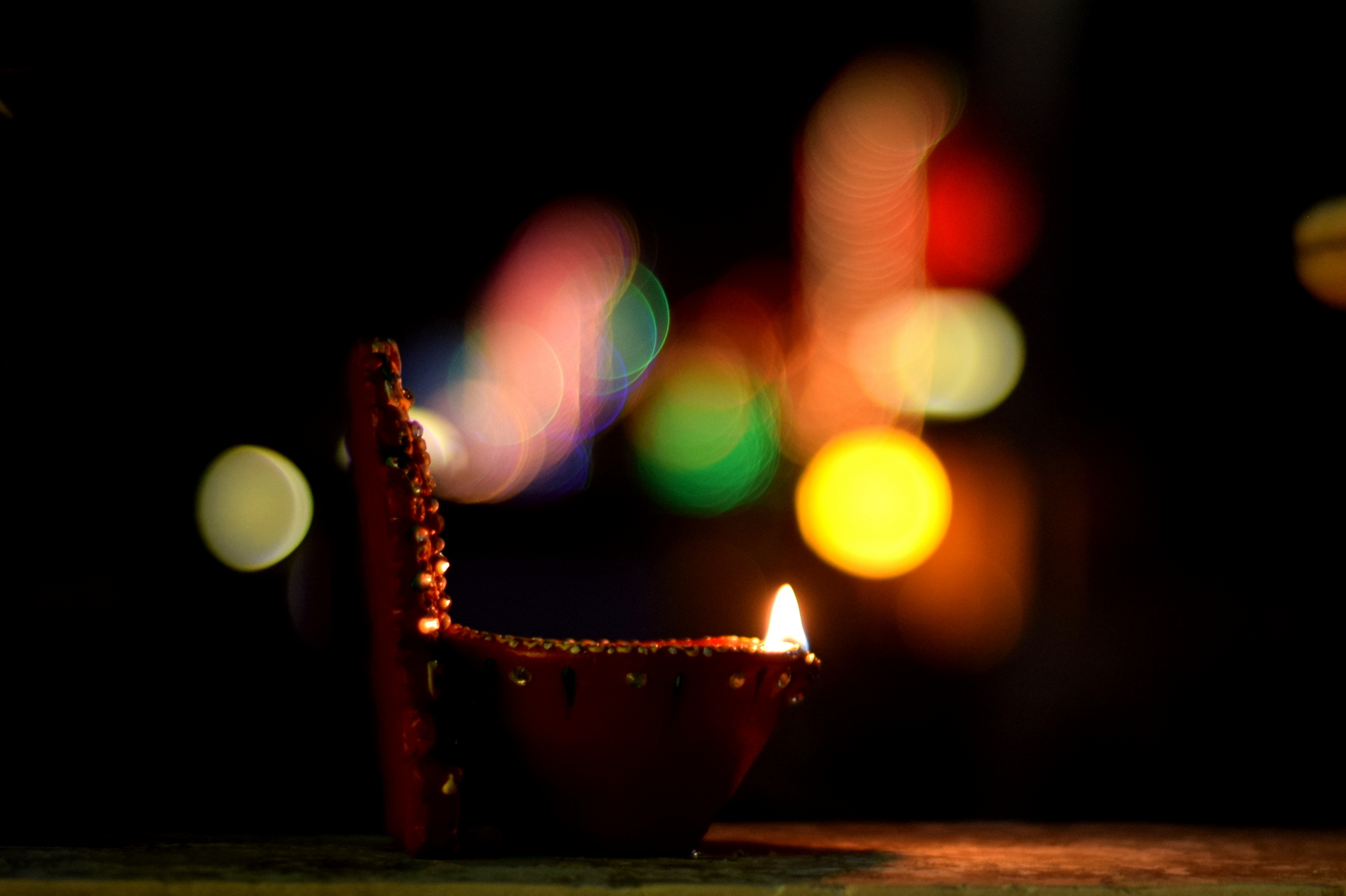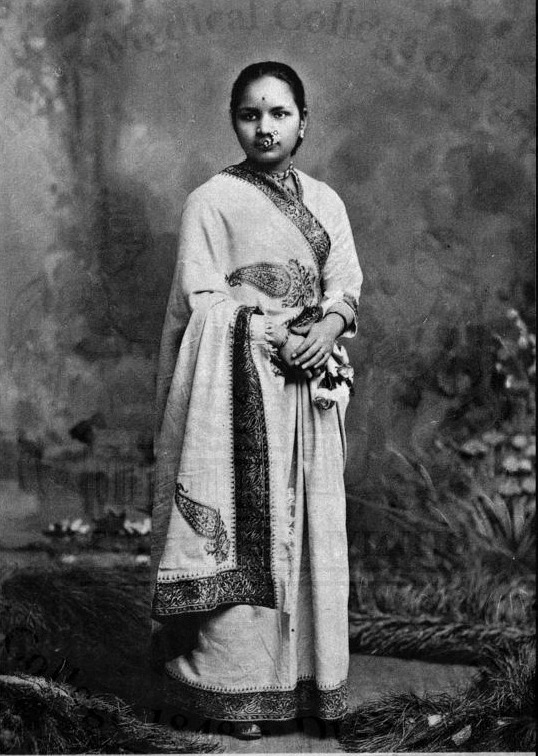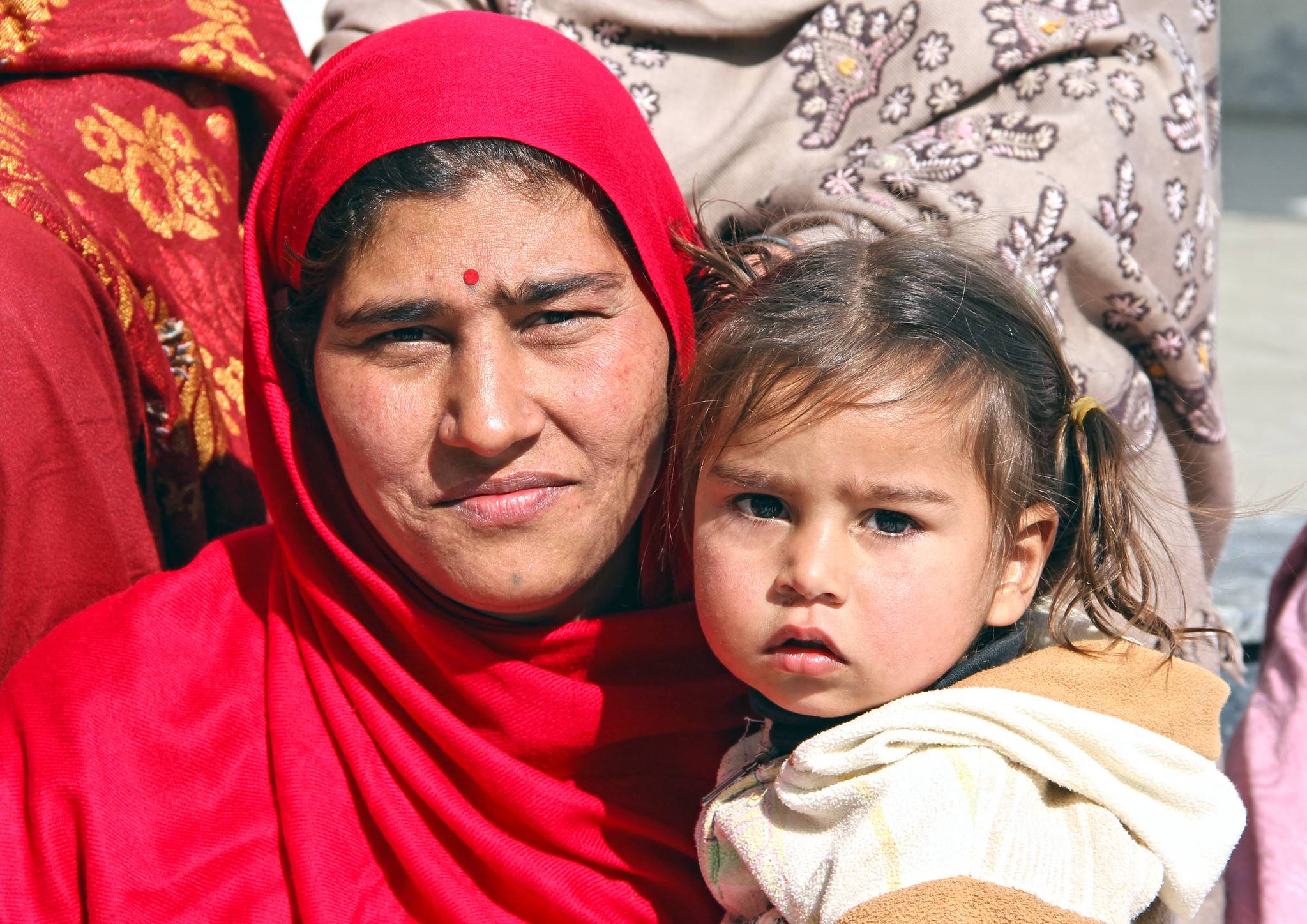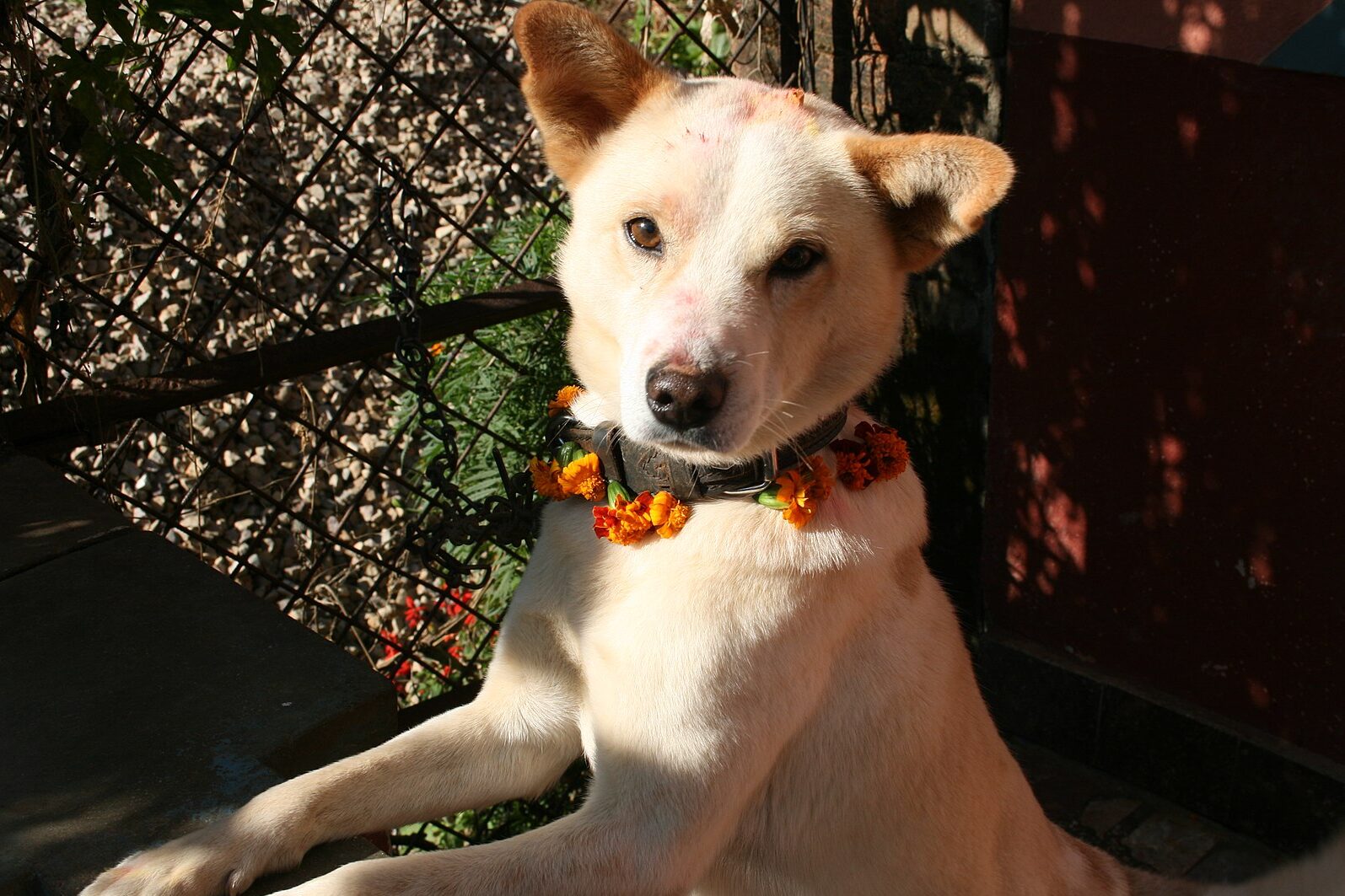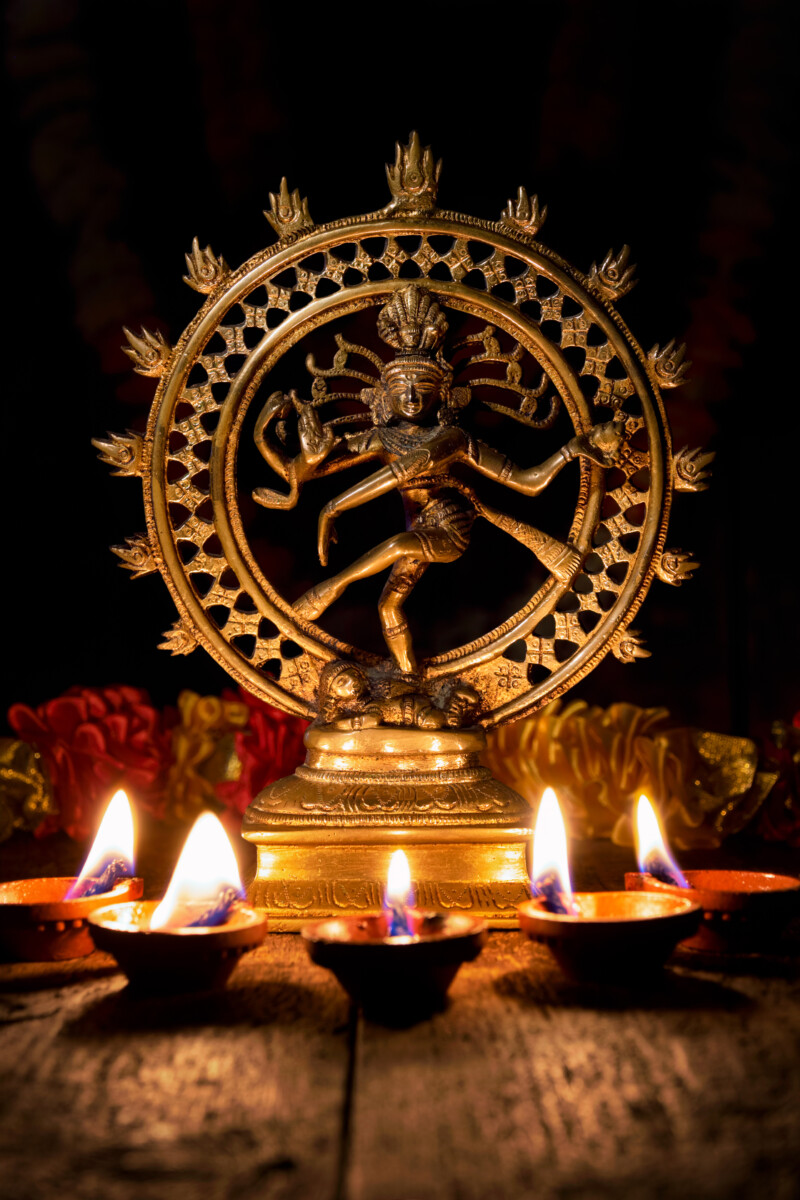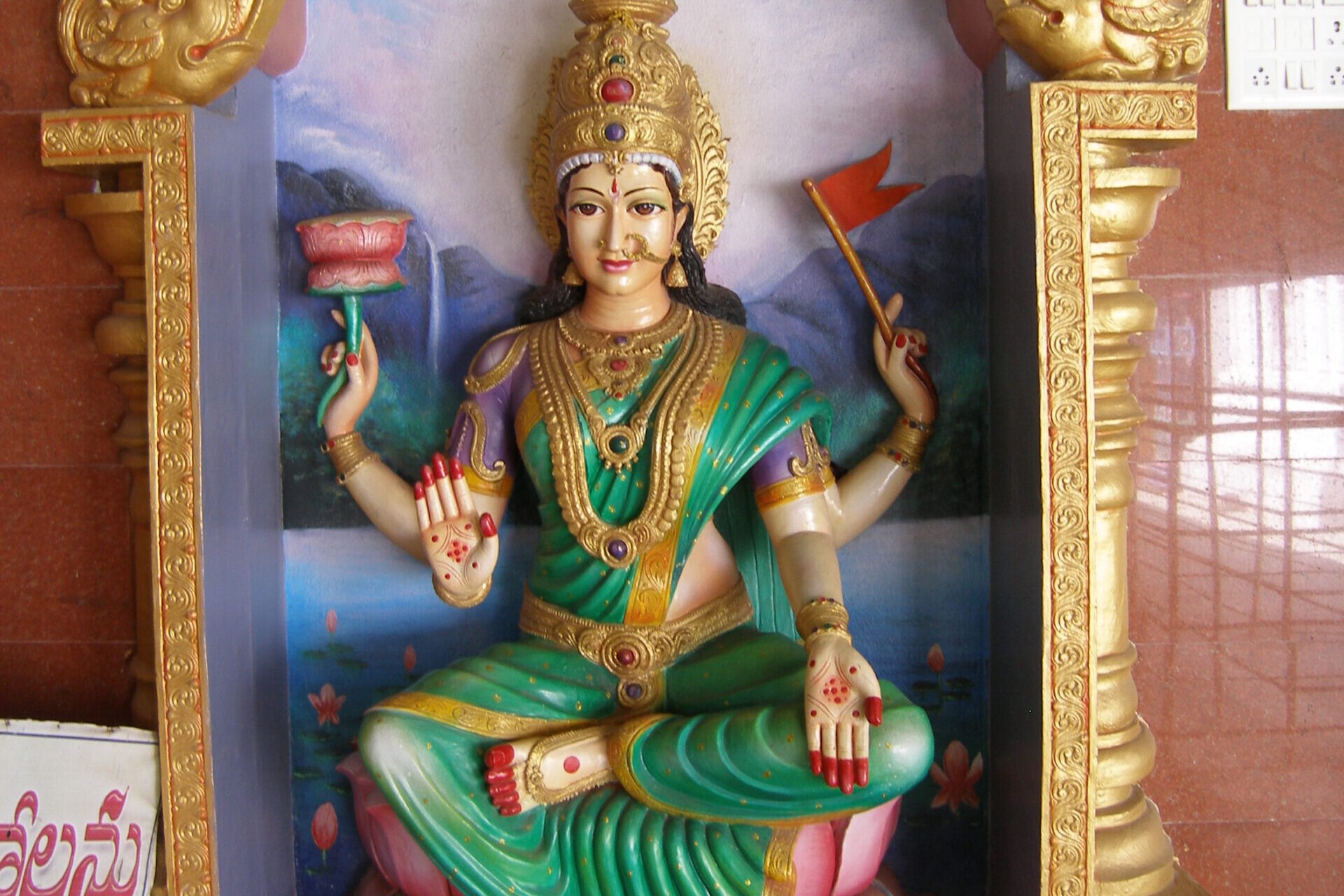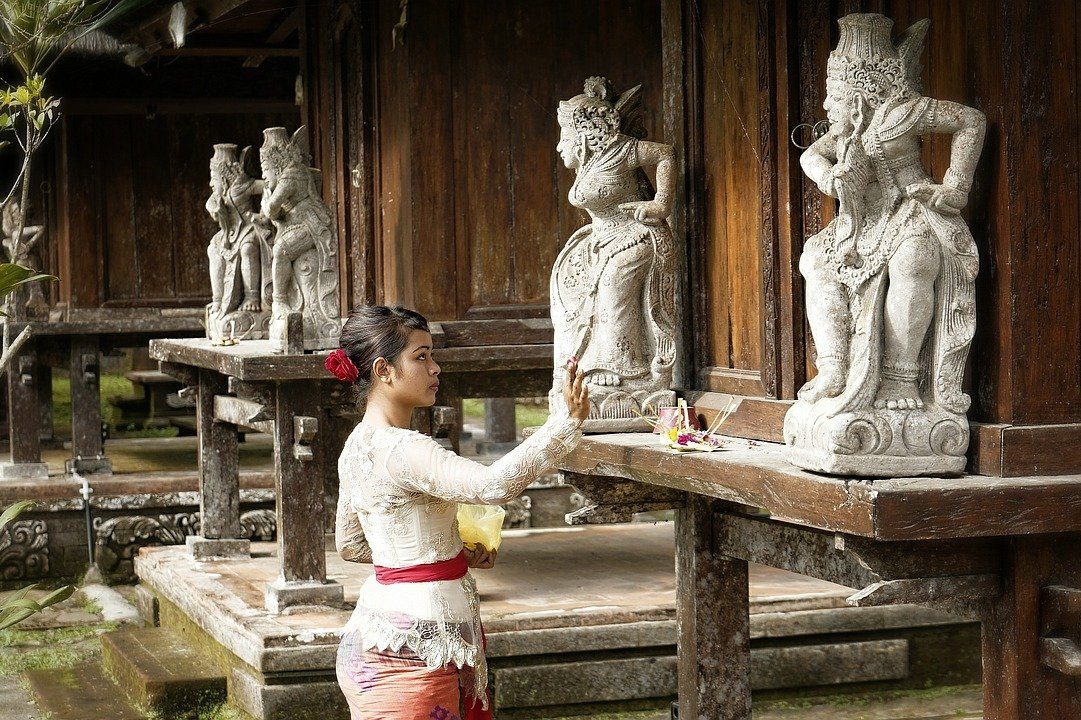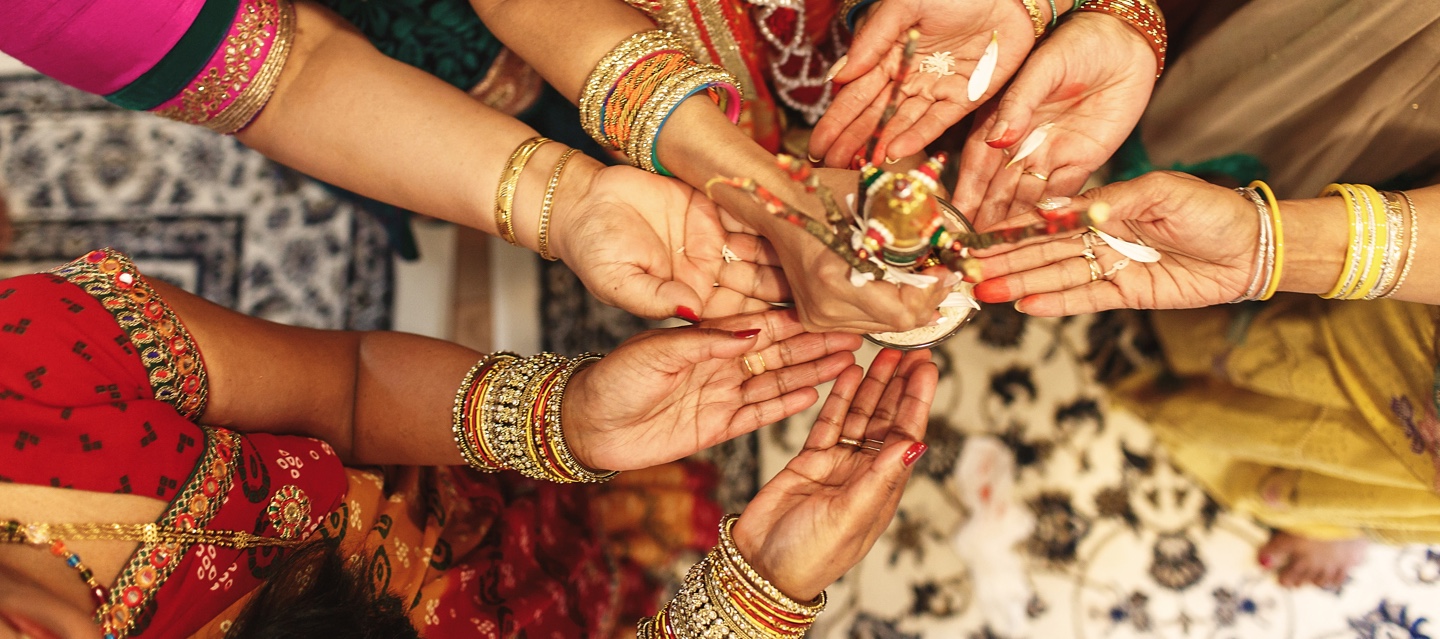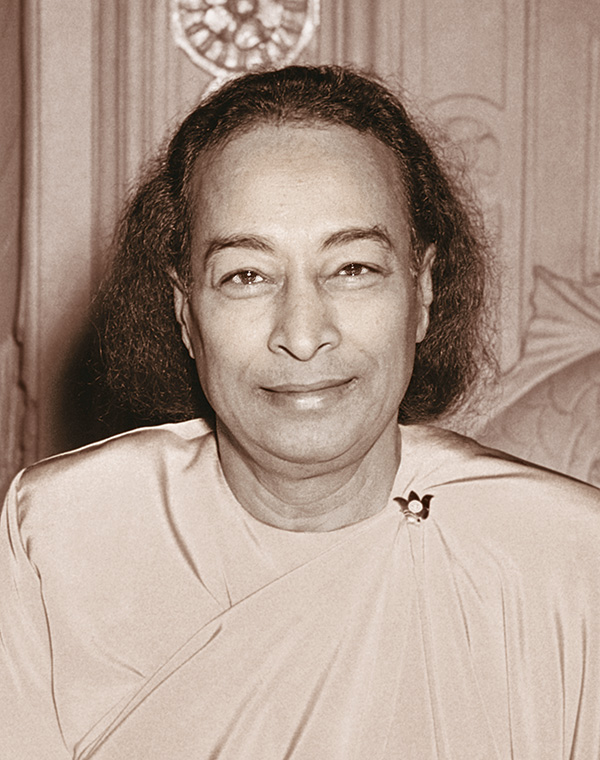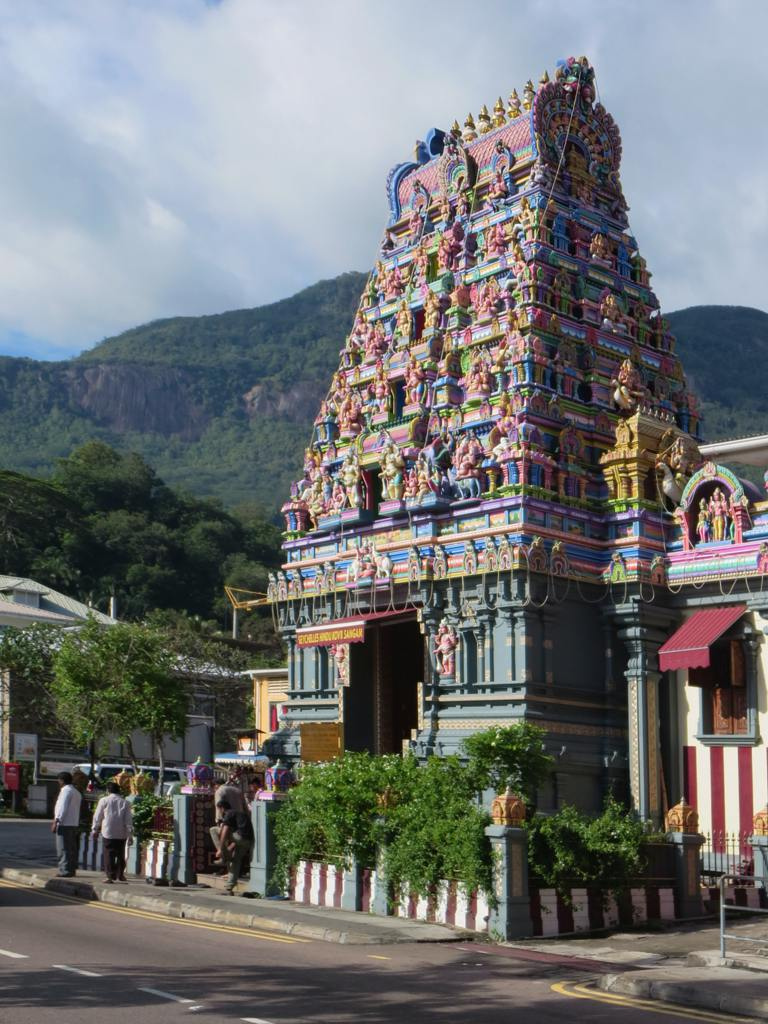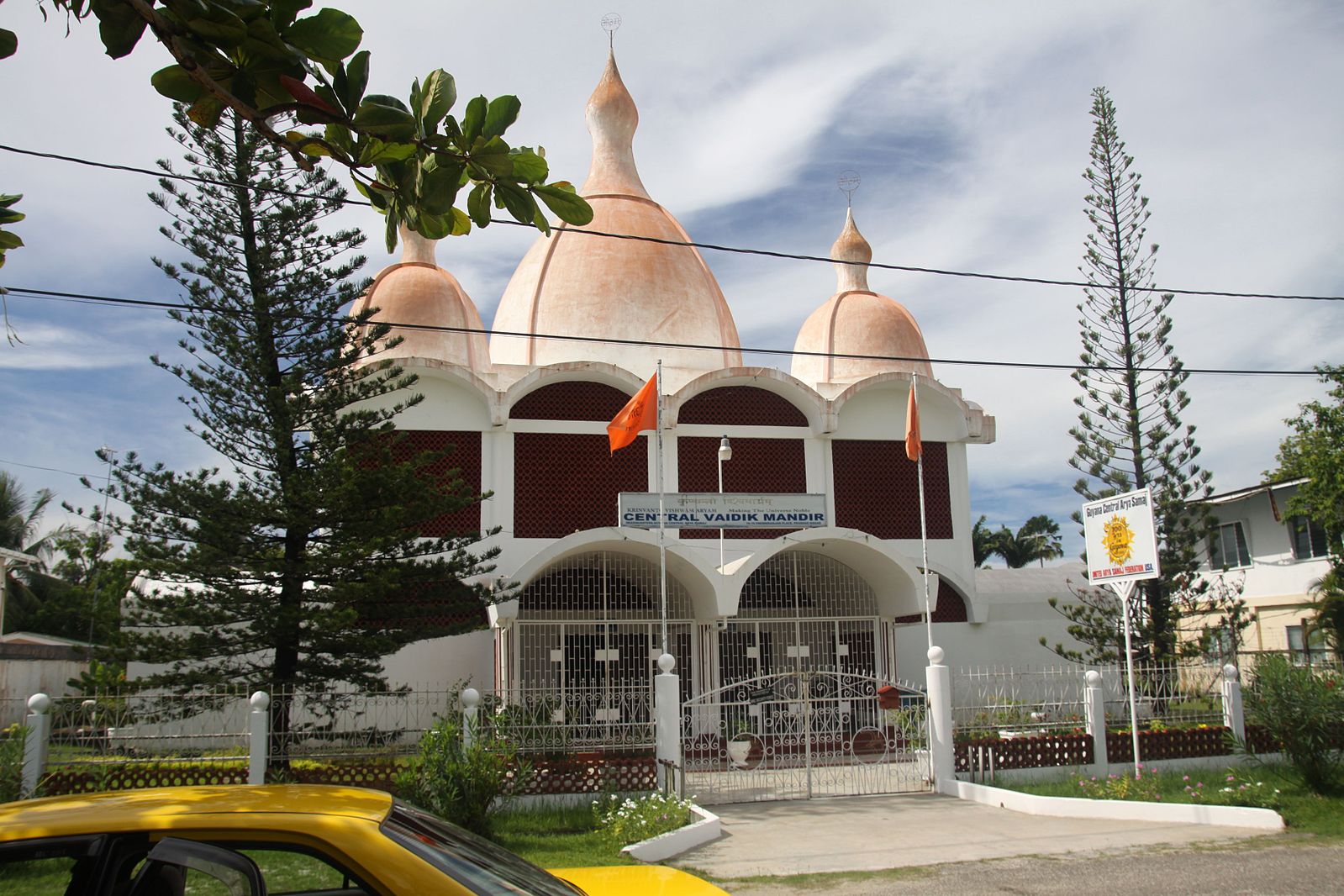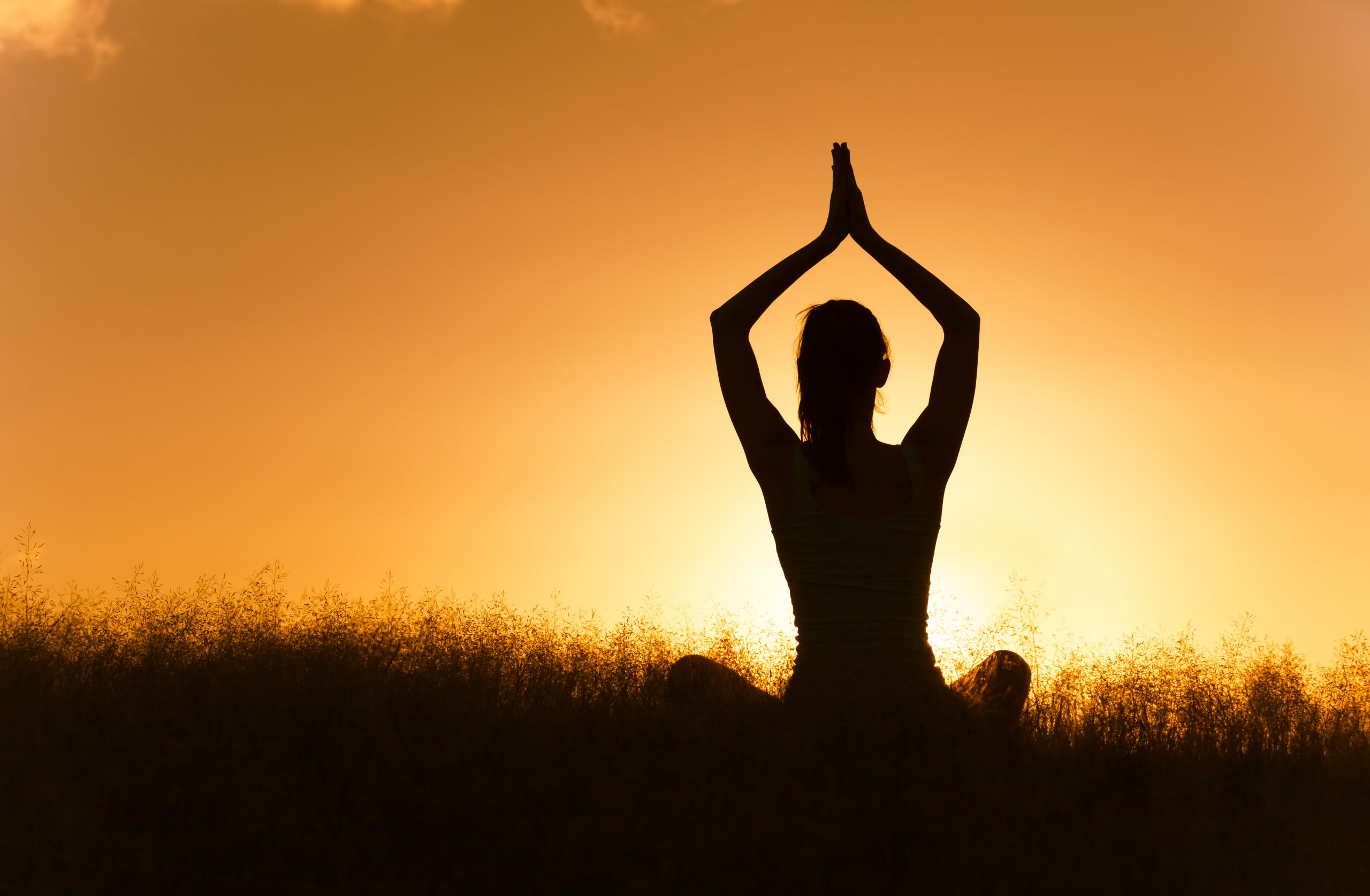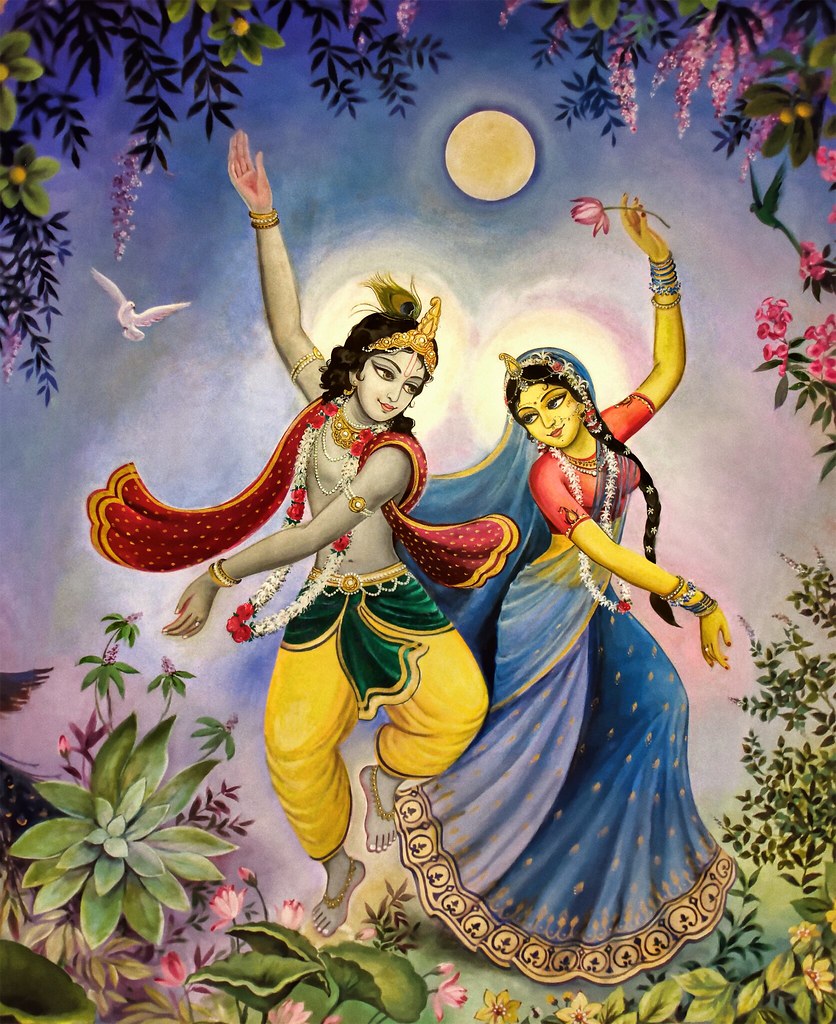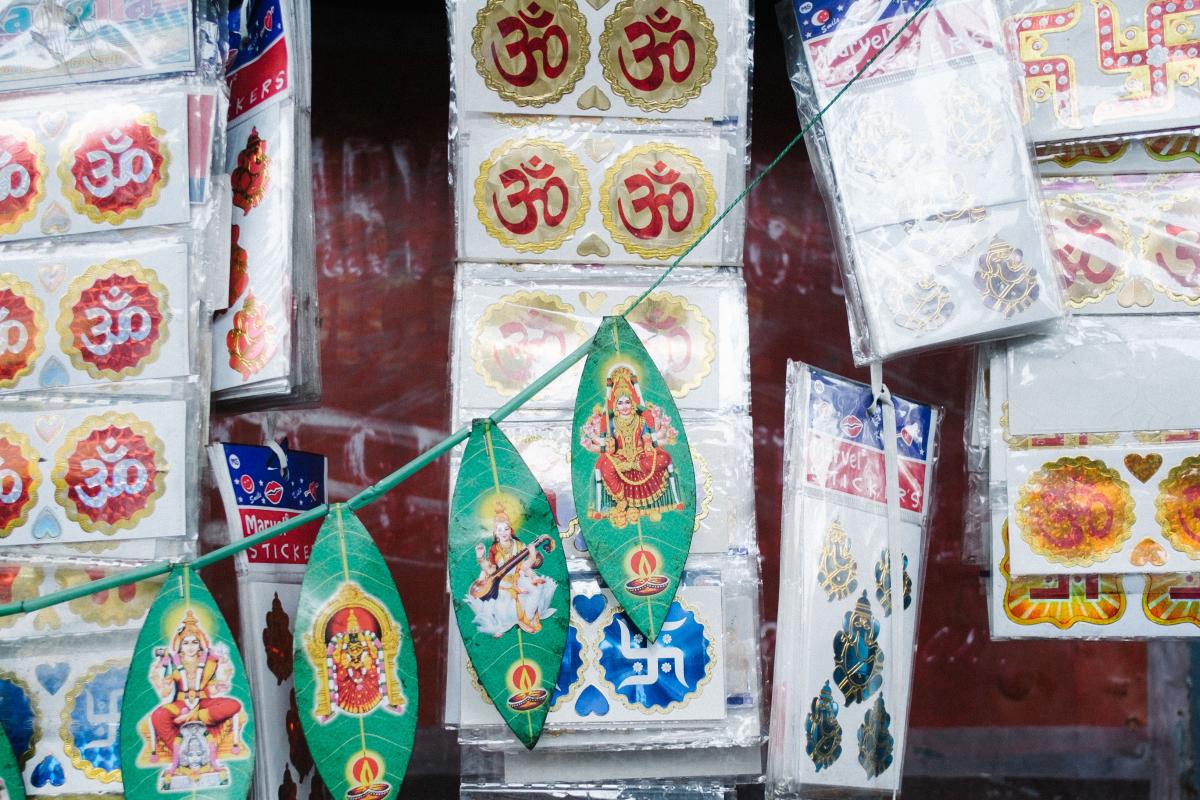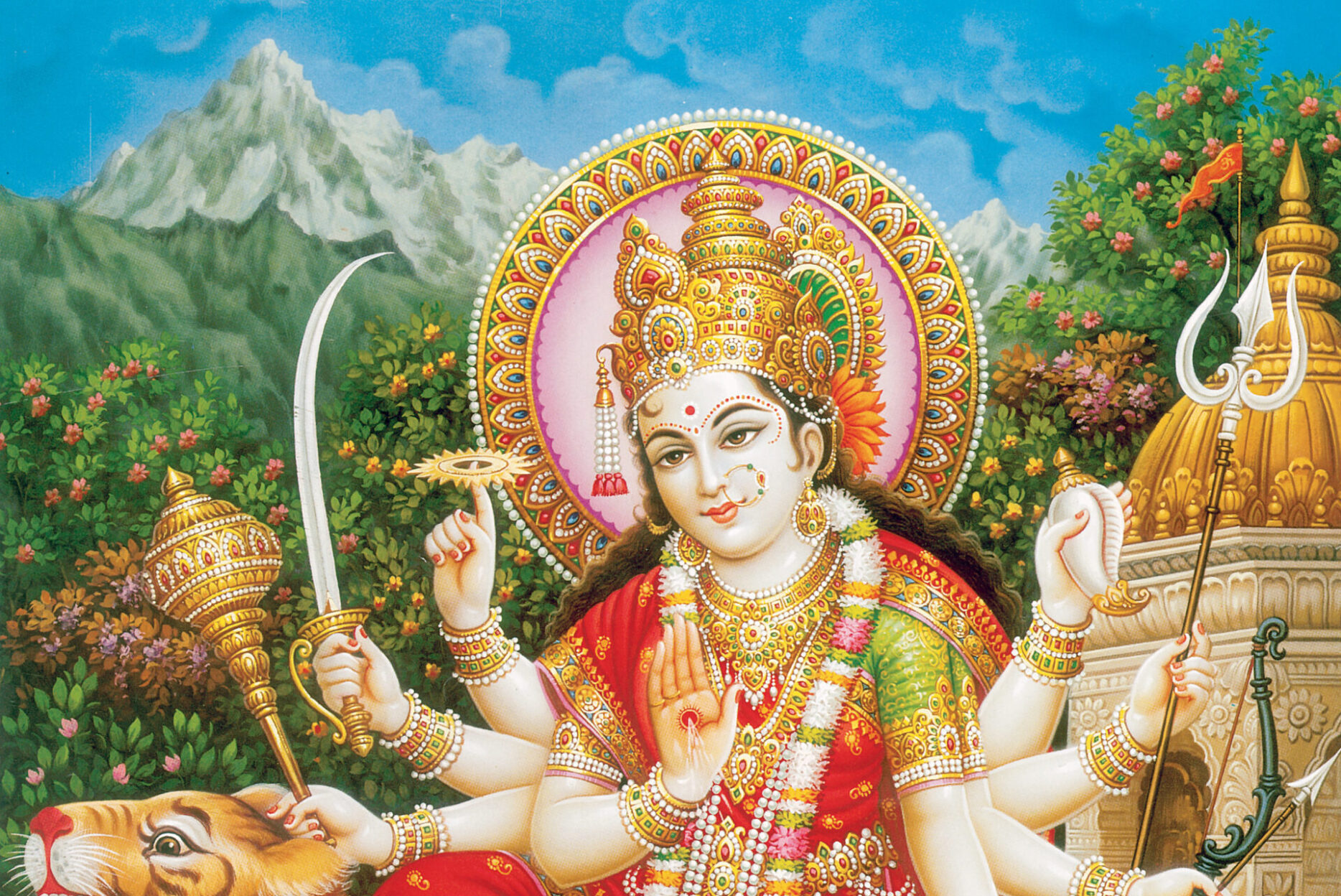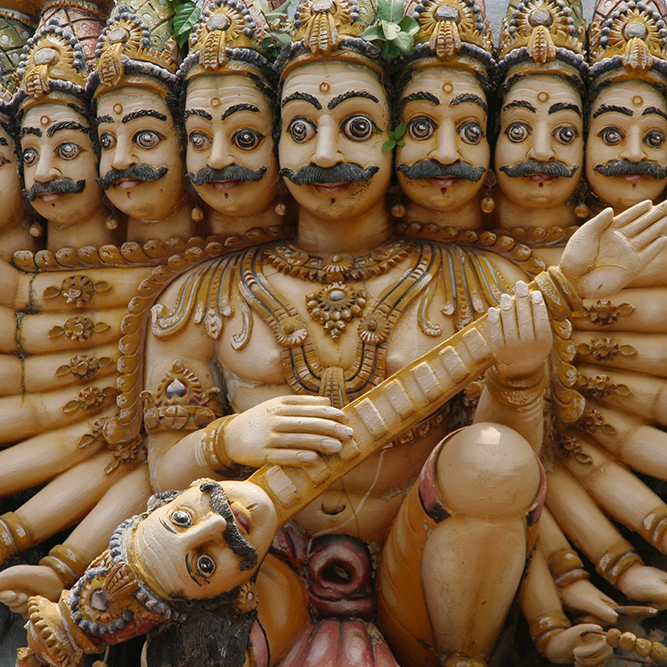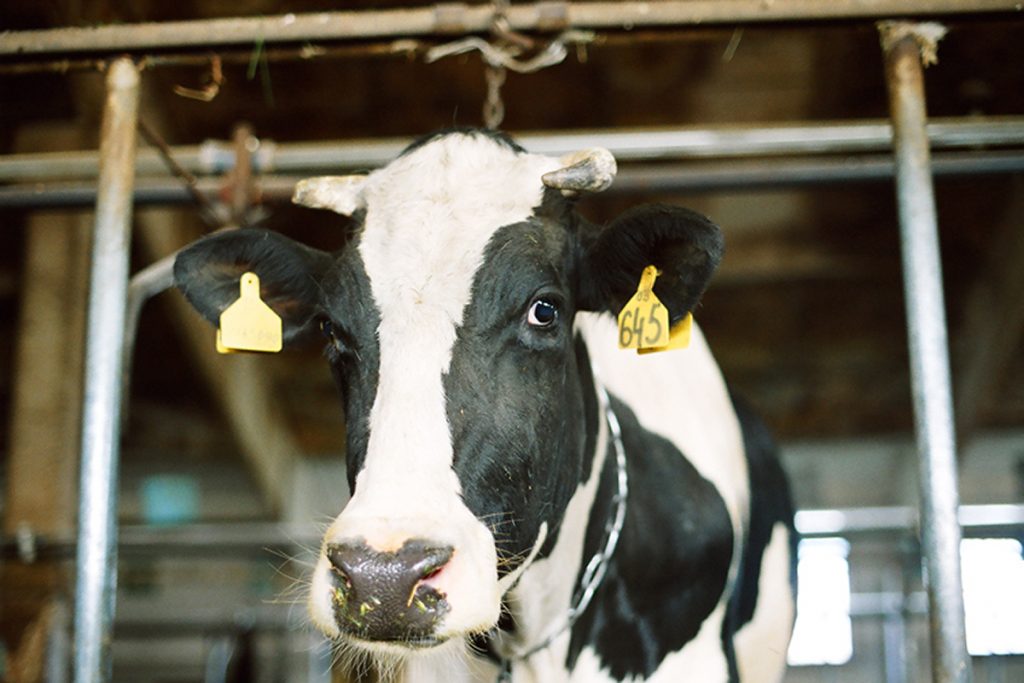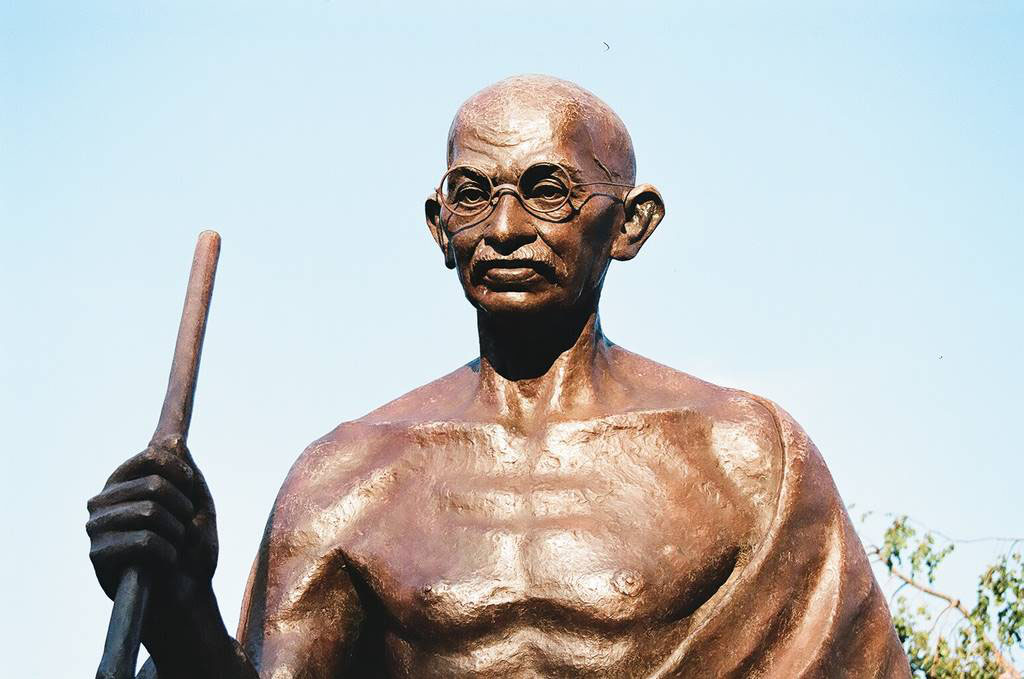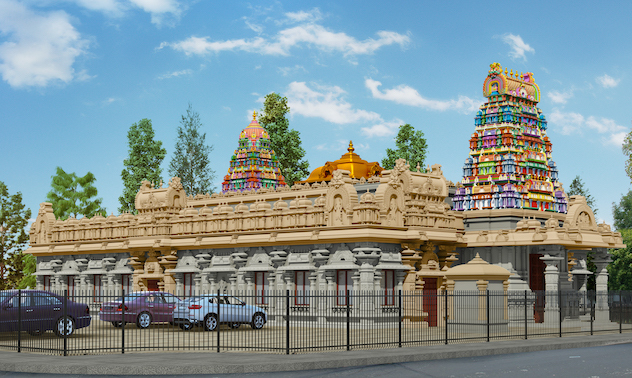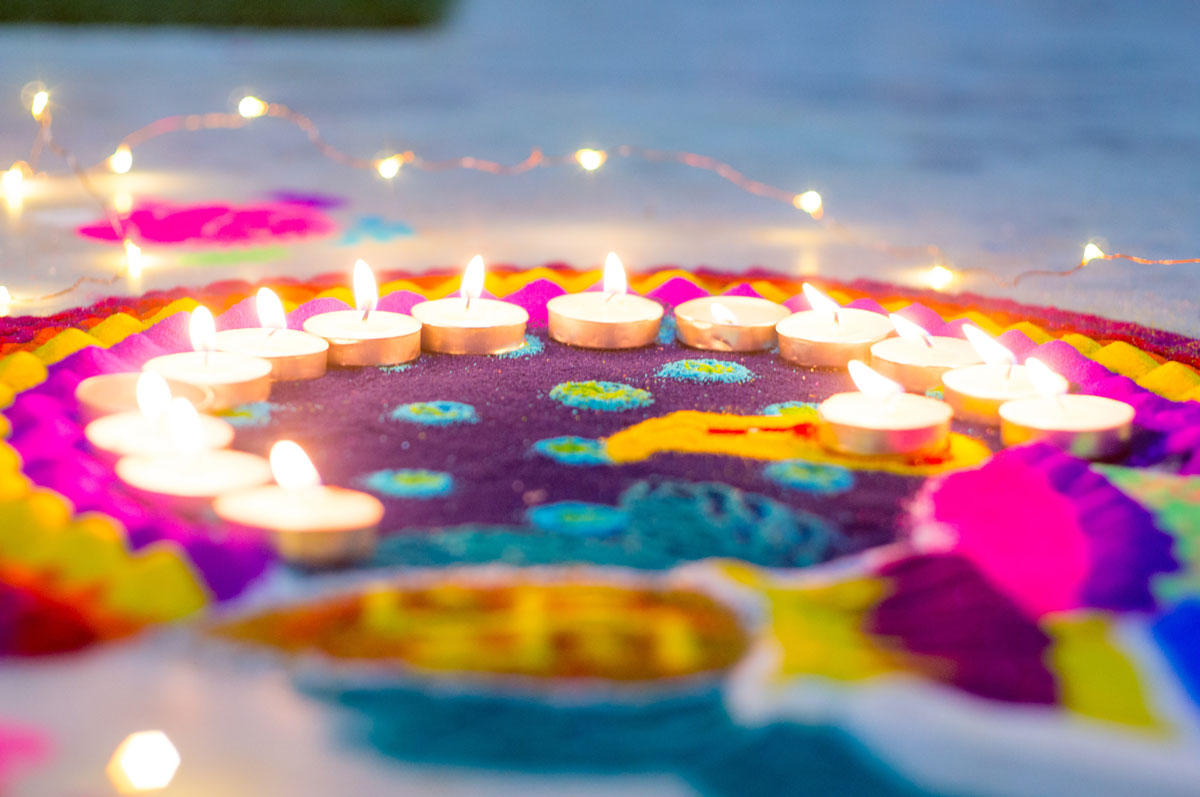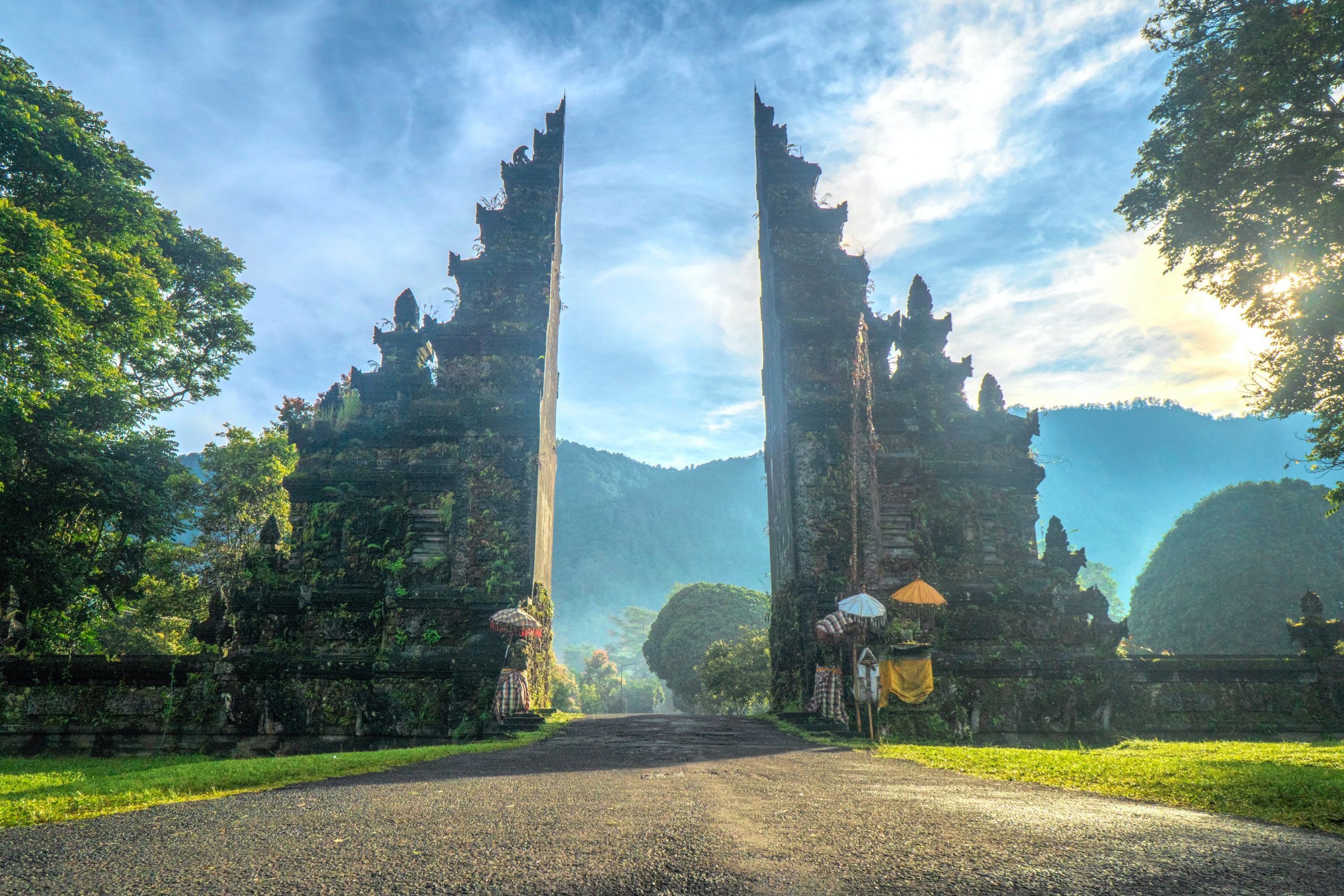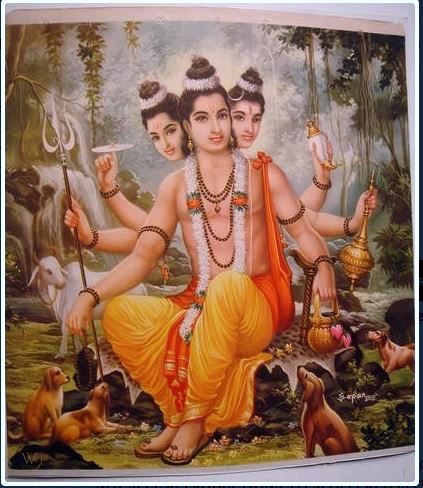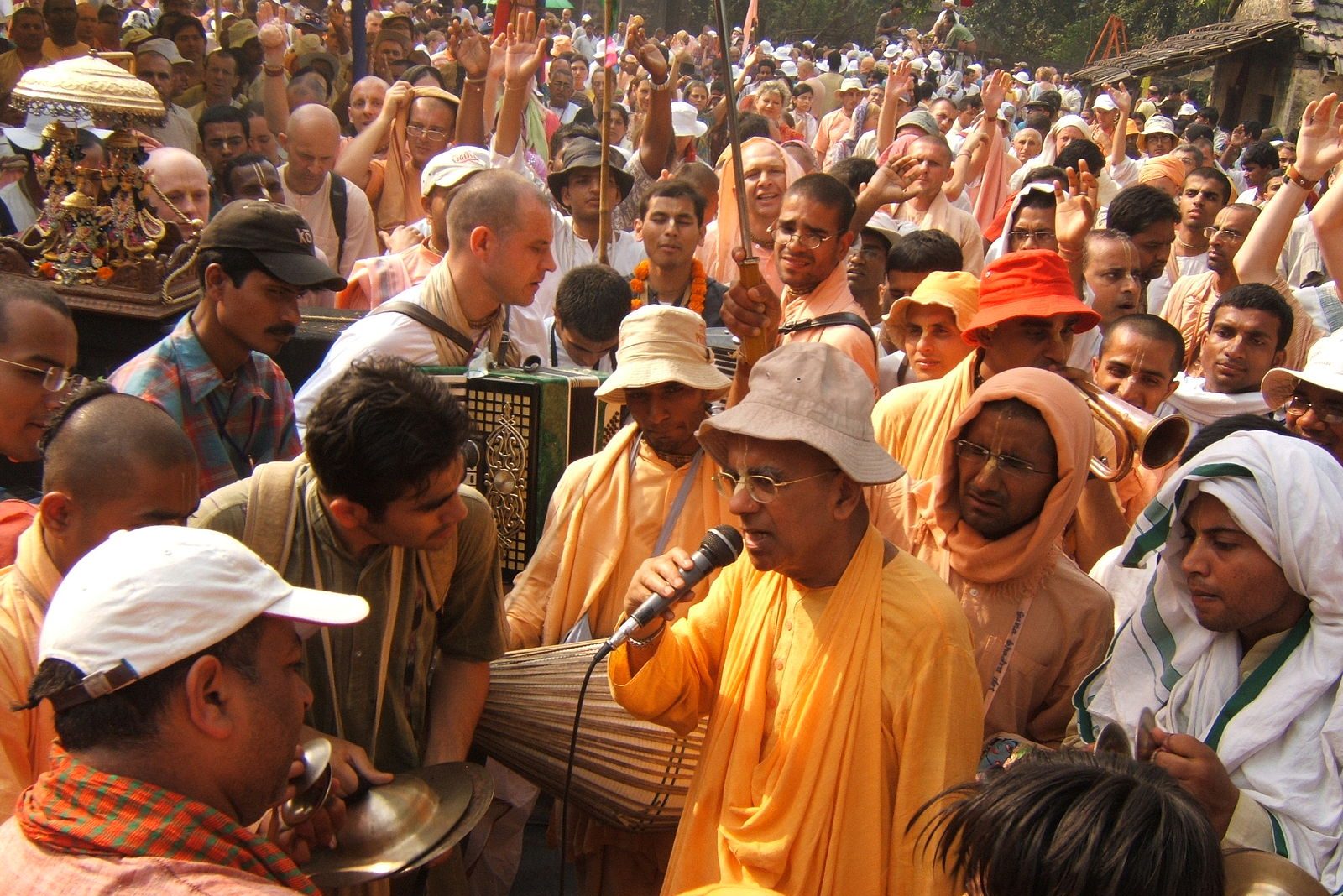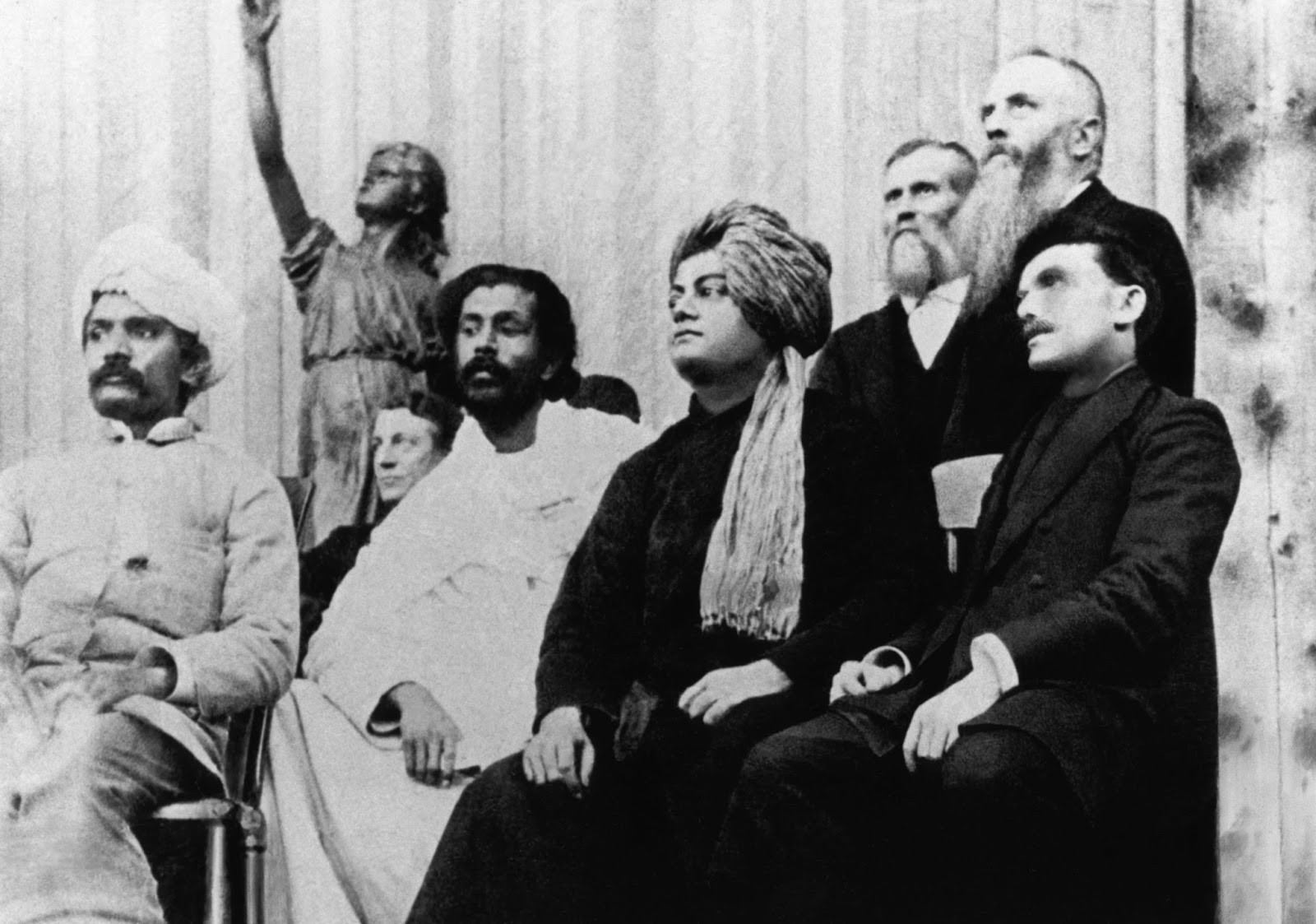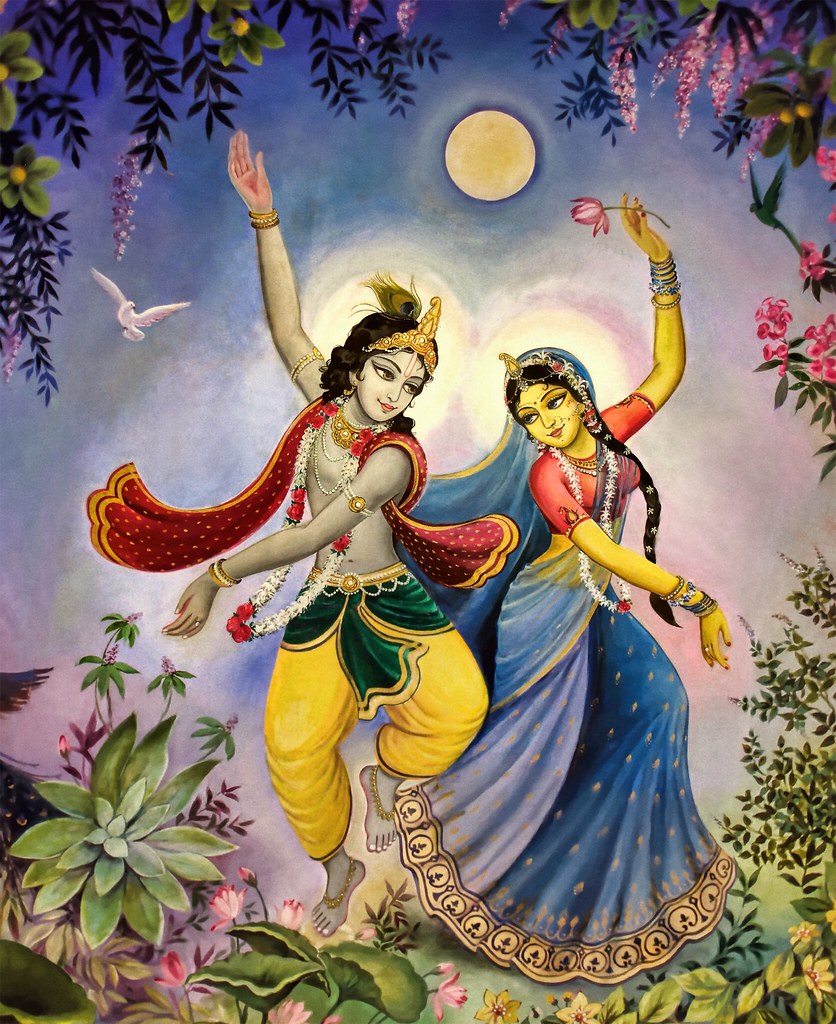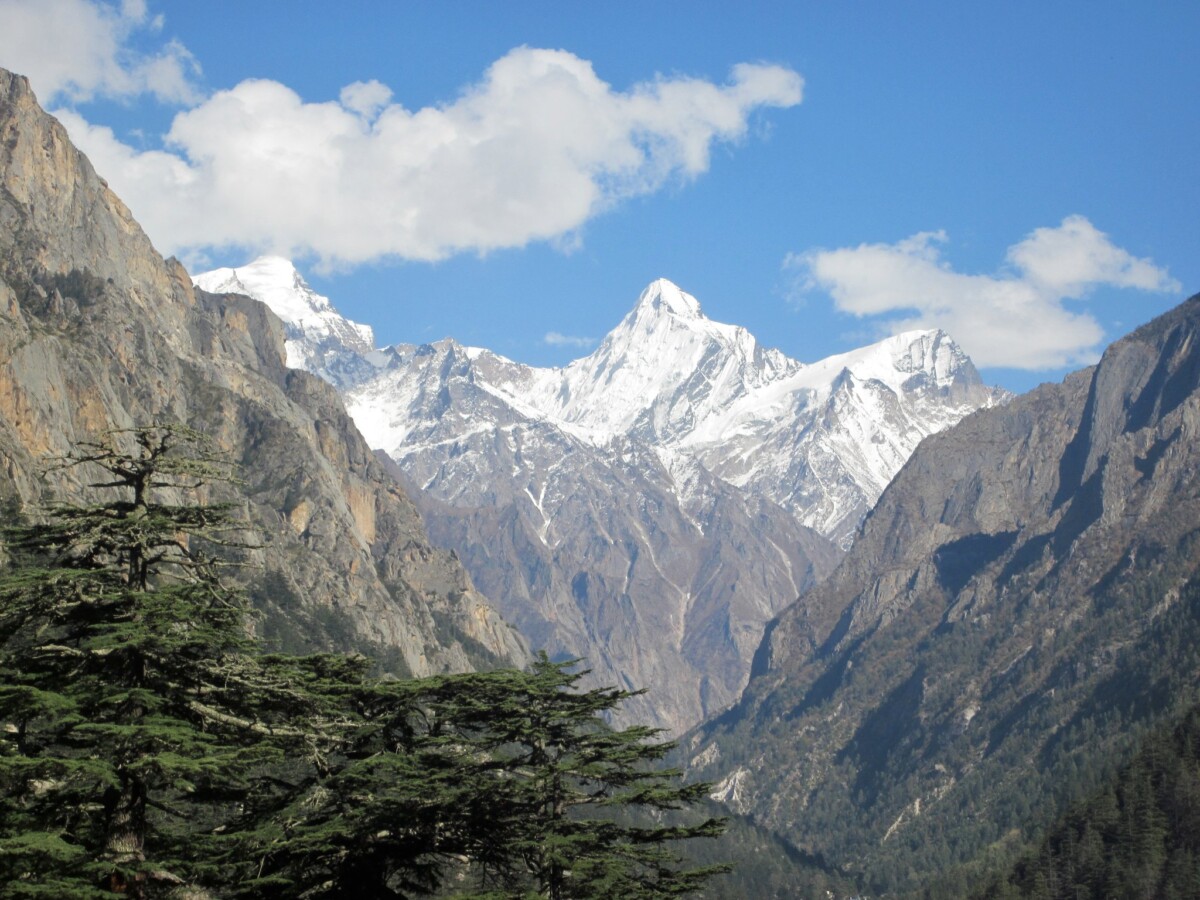
Ganga’s valley is deep and dramatic. Endless stands of sacred deodar cedars cover the slopes leading up to snow-capped mountains. They have a fragrance of turpentine that I was told is healthy for the respiratory system. Devas are said to live in the deodars, thousands of them inhabiting these valleys, beings made of various colors of light, moving through the dark green deodars, often flying over the valleys like glowing rainbow winds full of beautiful faces.
Continuing up, we came into closer view of snow-clad peaks.

That evening we reached Gangotri, one of my very favorite places in the world. It was quite cold, especially because I was mostly going about barefoot. We went for darshan in Gangotri Temple at evening aarti when the crowd was thickest, joining the fervent bhakti of the crowd.
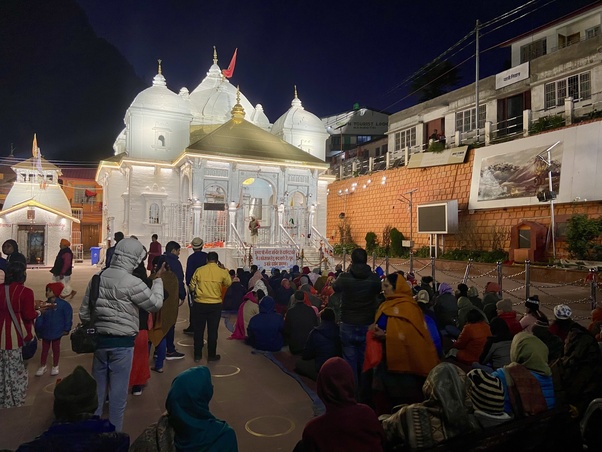
Staying with the sadhus at Dandi Ashram
We stayed at Dandi Ashram, a wonderful place, though the construction perhaps left something to be desired, as a large part of the building had recently collapsed! Nevertheless we stayed there.
This ashram is really a wonderful place run by such nice, fully honest people, very spiritual and traditional. It was by donation only: lodging, chai, and food (two meals a day) were offered to whoever wanted to come, and no one ever brought up money. Of course this does come with certain discomforts: the rooms are very cold and mine was dirty (as in, bird-poop-on-the-pillow dirty; I just turned the pillow over). No locks on any doors. Bathing consisted of going to the kitchen to give the cook a few rupees to heat you up a bucket of river-water; in the cold Himalayan air of Gangotri, nothing feels better than standing in that hot bucket and scooping the water over yourself. Most of the time there was no electricity so I was bathing in the dark. Mostly sadhus stay there. Dandi Ashram is where all the sadhus in Gangotri get their food.
They have a nice Homa Kund for Yagnyas:
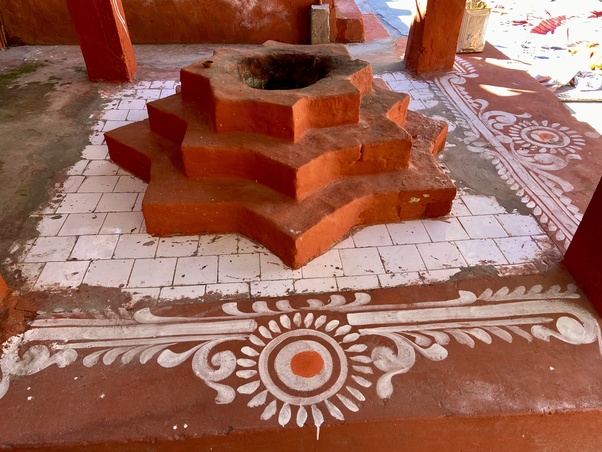
A Ganesha-Hanuman shrine:
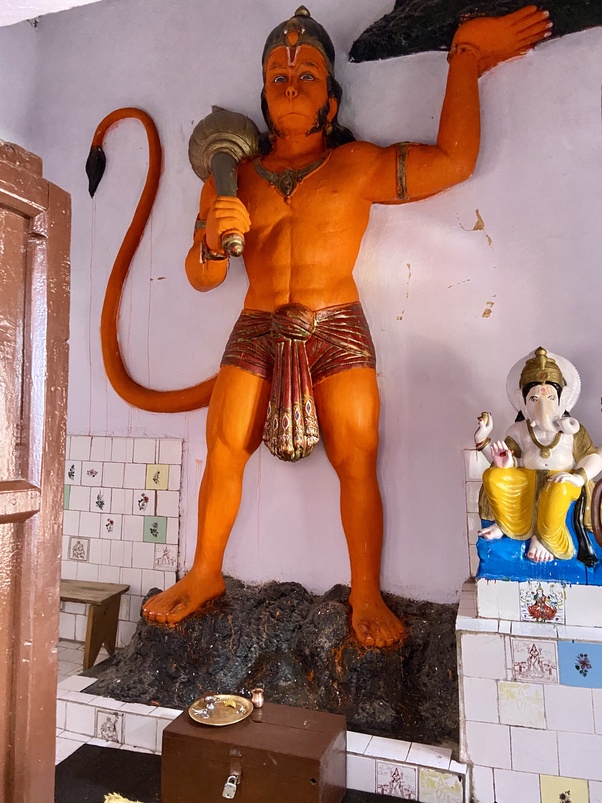
I was happy to return to some of my favorite spots, like Suryakund waterfall in the center of Gangotri:
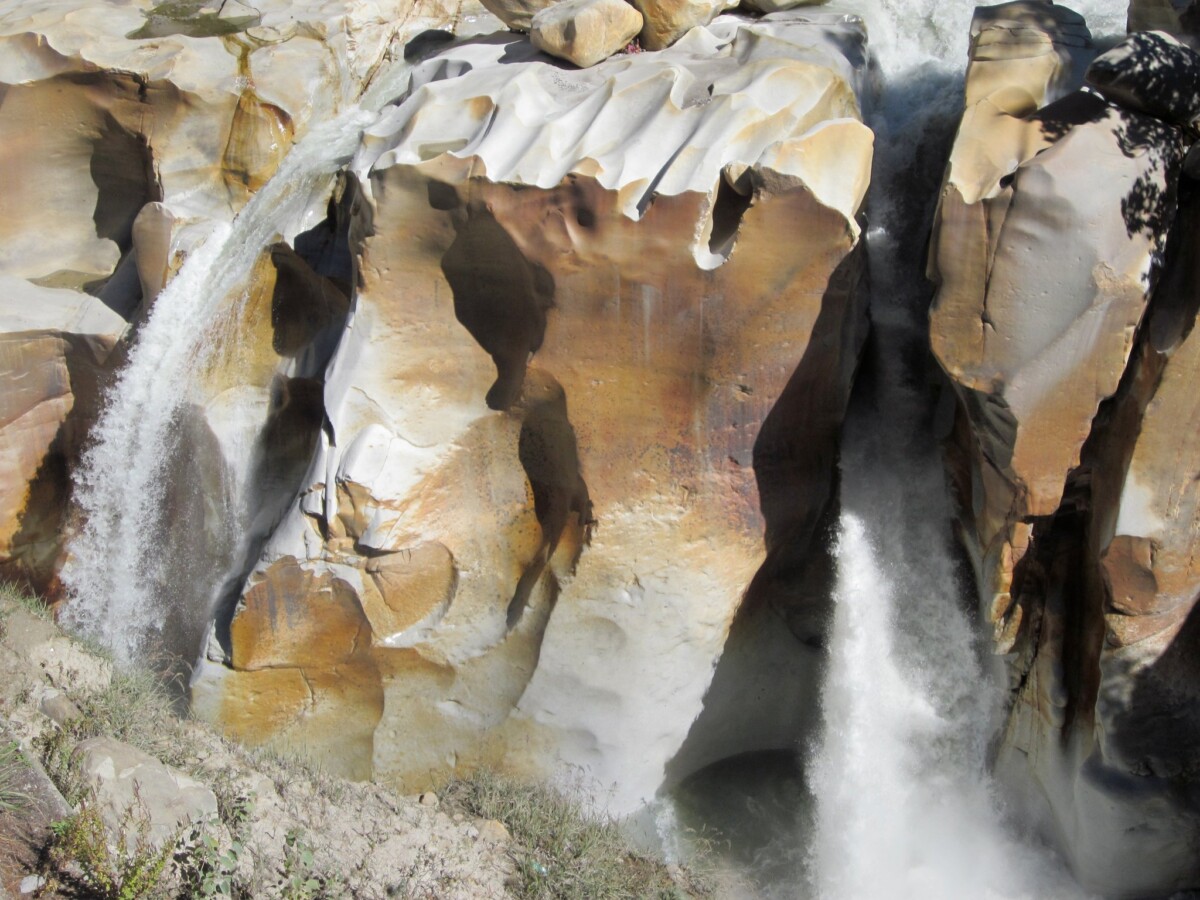
And to see the exquisite Sudarshan Peak spearing up over the valley.
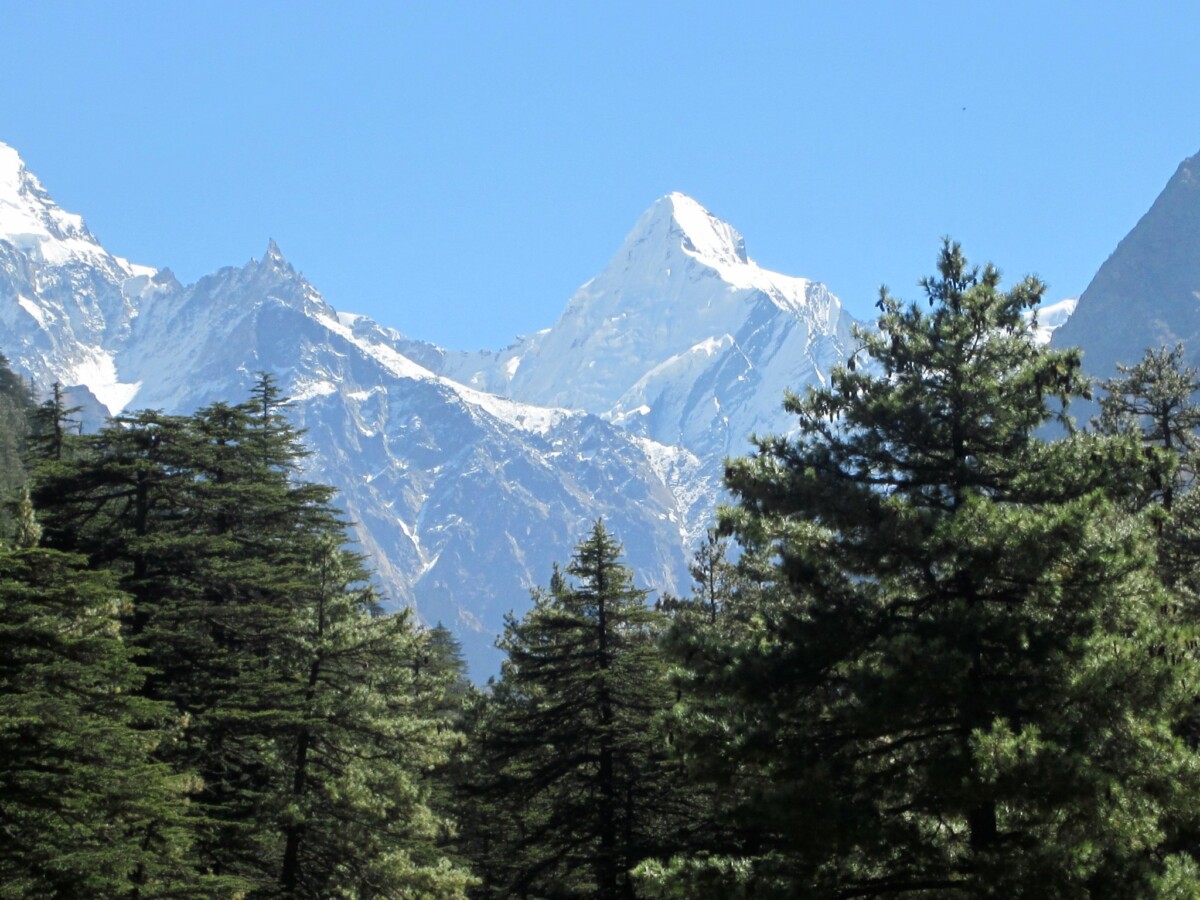
The whole area is a Divine and beautiful paradise. I love just walking around there and sitting on those sunny rocks above the waterfall, feeling that thundering roar. You can feel the purity of the prana in the high mountain air.
Some of us went and took snanam in the Ganga here. The water was shockingly cold, only barely above freezing. We also did a full, formal Ganga Puja with a priest’s services.
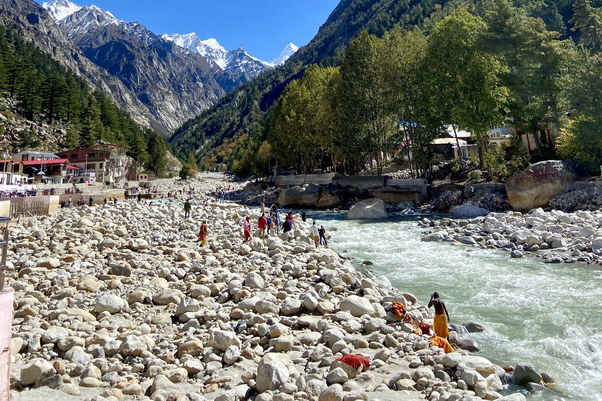
Then we took a barefoot hike through the forest to the sacred Pandava Gupha cave.
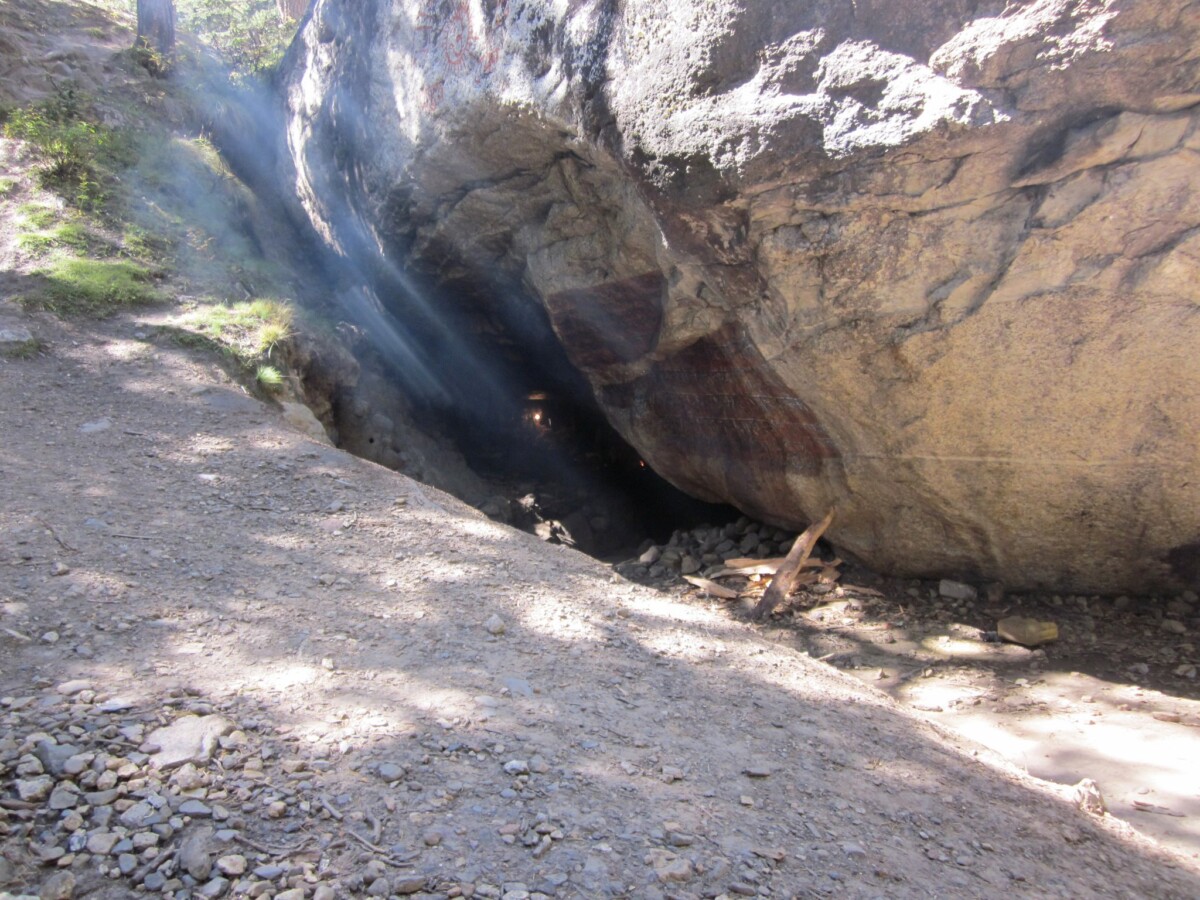
A lone dog appeared and guided us on our way, both there and back, and then disappeared again. In the cave, we had a long conversation with the resident sadhu who dwells there all year long, even through the winters — a venerable Ramanandi Vaishnava monk of beautiful and heartfelt devotion.
Two days to the source of the Ganga
On the morning of October 17, by 7am we began our hike to Gaumukh, the glacial source of the Ganga. The rising sun had not yet crested the eastern peaks.
The trail began through an exquisite autumnal forest:
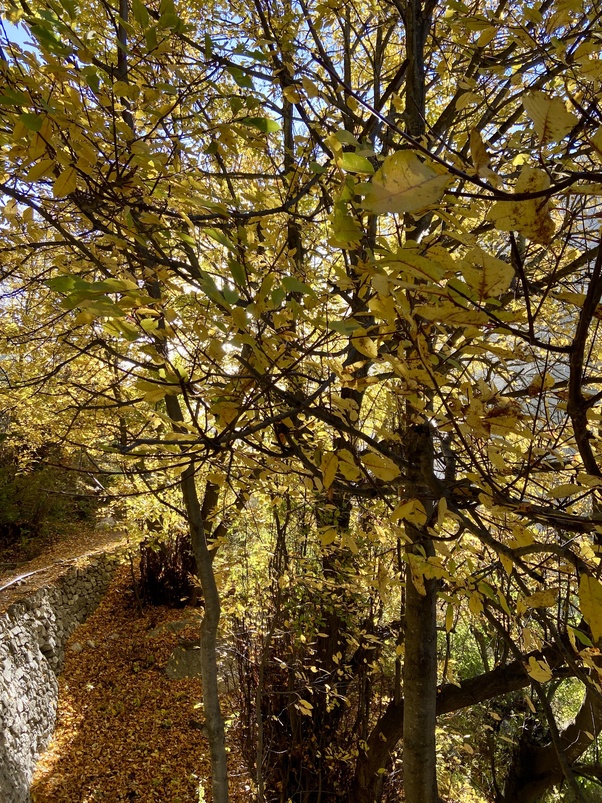
Soon we were up above treeline, following the trail toward the snow-clad Bhagirathi peaks.
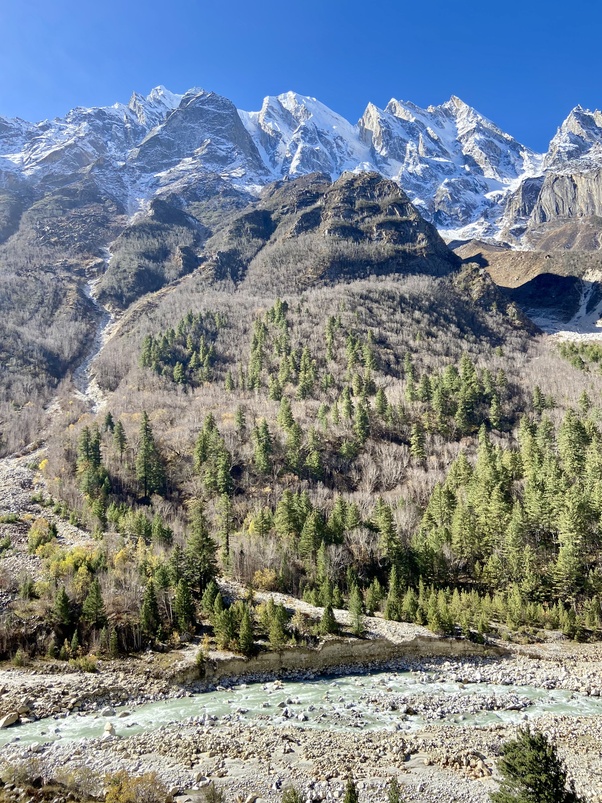
We slept that night at the seasonal Bhojbasa camp, where we spotted several mountain goats. In the morning of October 18, we completed our hike to Gaumukh, curving around the great Mount Shivling, high in the Himalayan tundra:
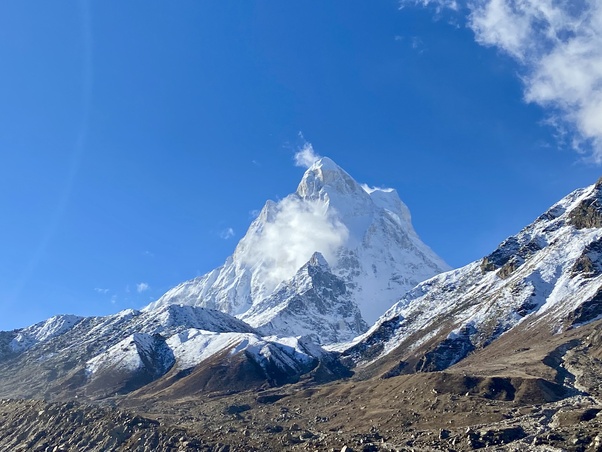
The little streams we were fording were now frozen solid. We passed a couple of Shaiva shrines by the trail:
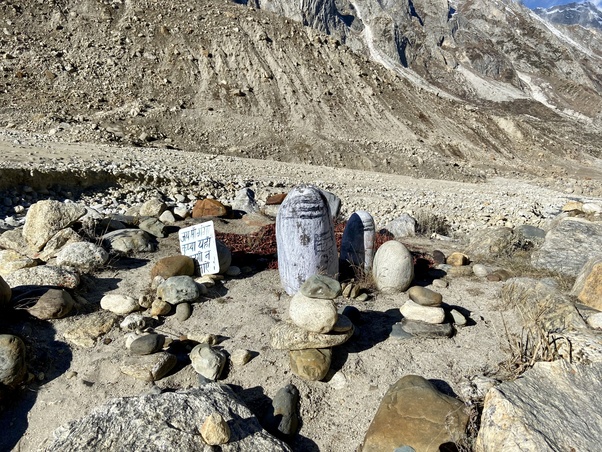
By 9am we reached Gaumukh.
My friend consecrated a new moonstone mala there, and we filled bottles of the purest possible Gangajal to take home. I drank deep and full from the river, and did full snanam in the icy river.
A note: Though I undertook this trip in the autumn of 2022, information on the temples and places visited presented at the links in this article are current as of mid-2025. Logistical details of getting between places can change quickly, however, and individuals should verify the latest information from other sources.
All photos in this article © Devala Rees.


